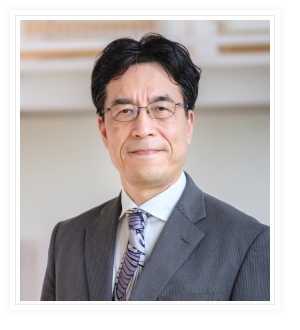TOP > Greeting from Prof. Shinichi Egawa >
Greeting from Prof. Shinichi Egawa
 Thank you for visiting our website. I deeply appreciate the help and
support from all over the world at Great East Japan Earthquake. Though
the affected area is still suffering for the recovery and reconstruction,
we are walking together to build a disaster resilient and sound society
that brings happiness in our mind. IRIDeS is built for the first time involving
Division of Disaster Medicine as a disaster specific research institute.
Division of International Cooperation for Disaster Medicine aims at the
improvement of medical, public health and welfare providers to sustain
disaster resilient society.
Thank you for visiting our website. I deeply appreciate the help and
support from all over the world at Great East Japan Earthquake. Though
the affected area is still suffering for the recovery and reconstruction,
we are walking together to build a disaster resilient and sound society
that brings happiness in our mind. IRIDeS is built for the first time involving
Division of Disaster Medicine as a disaster specific research institute.
Division of International Cooperation for Disaster Medicine aims at the
improvement of medical, public health and welfare providers to sustain
disaster resilient society.Medical response to disaster was systematically improved after Great Hanshin-Awaji Earthquake in 1995. Japan Disaster Medical Assistant Team (J-DMAT) played an important role in various disasters including GEJE. J-DMAT succeeded the methodology of Japan Disaster Relief team for humanitarian medical aid to mainly developing countries managed by JICA. J-DMAT enters in the affected area within 24-48 hours to save lives within 72 hours until the local healthcare providers recover. J-DMAT also assesses the area and helps the transportation to distant areas. Wide transportation system helped the hospital evacuation from Tsunami affected coastal areas and nuclear power plant accident. Emergency Medical Information System (EMIS) was also established after Great Hanshin Awaji Earthquake to collect the hospital information through website for better coordination.
Medical needs after GEJE appeared, however, in a different manner from Great Hanshin Awaji Earthquake when trauma and crash syndrome was the main cause of death. Tsunami affected a huge area and most of the victims were killed of drowning and hypothermia. Vulnerable population were more prone to poor nutrition, crowded population, hygiene problems and loss of daily medical, public health and welfare supply. It was clarified that local healthcare providers should know about the disaster management to receive the support more effectively.
I have developed my career as a pancreatic surgeon together with academic research and education. I served two years as Secretary General of University Faculties and am current Secretary General of NPO Gonryo Kyougikai (www.gonryo.com). This NPO is engaged to improve the mentorship and recruiting residents to wide east Japan area to improve community healthcare. Mentorship curriculum is approved by Ministry of Health, Labour and Welfare of Japan and provided more than 300 mentors in the member hospitals. Gonryo NPO also provides seminars of clinical skills using animals or high-tech simulators, assists the mentors to attend educational workshops, and introducing distinguished mentors to medical students and residents. I believe strengthening of medical network through these activities forms disaster resilient society.
It is expected with high possibilities that Tokyo Metropolitan area and South-West part of Japan will be affected strong earthquake and Tsunami. Hydrometeorological disaster is also increasing togher with Biological, Nuclear and Chemical hazards. Human society will face complicated situation caused by urbanization, increasing vulnerable populations and widened areas. Resilient society should cope with multihazards with flexible resilience. One of our mission is standardization of disaster coordinator throughout Japan. Networking of specialist in a national platform like FEMA and training of coordinators by established curriculum will provide more immediate and effective response within and outside of affected area. Establishment of national response system is attracting attention from international society.
Another mission is to educate healthcare providers to be familiar with disaster response. Training like J-DMAT is unrealistic, but we should know what kind of system is available at the time of disaster. Active learning like workshop and simulation is very effective action-oriented education. Hosting seminars to medical doctors, nurses, pharmacist and administrative officers throughout the areas will make disaster resilient society.
Hospitals are planned to be disaster proof as much as possible, but its recovery of function largely depends upon the business continuity plan before disaster. Lifelines including electricity, gas, water and communicating tools, minimum requirement for minimal function, coordinated action of each staff are possible only when its recovery is planned and maintained beforehand.
Tohoku Medical Megabank Organization (ToMMo) is another mission of Tohoku University that is aming at genome bank as a next generation medicine, information bank for disaster proof information system between local hospitals and doctor bank for the affected area to promote young doctors to circulate between communities and university as a circulating career path. Human networking is a key to establish disaster resilient society.
Teleconference system is introduced as a communicating tool for our division. TV conference between Kesennuma and wide domestic and international points were performed on pancreatic surgery. Conference for robot assisted search and rescue was held between Sendai and Texas A&M. New technology will give us a new insight of better human society. Our division will persue stronger networking to build up disaster resilient society. Suggestions and comments are welcome!
| Shinichi Egawa |



